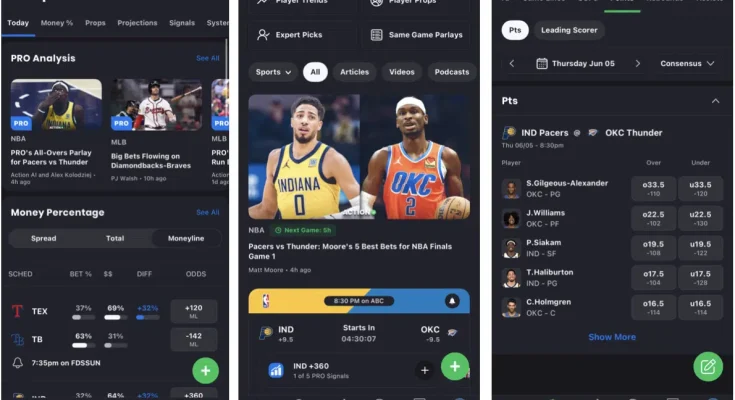Forget crystal balls and lucky socks. The real magic happening in sports today isn’t just on the field; it’s in the server room. Honestly, the way teams, bettors, and analysts are using artificial intelligence (AI) and machine learning (ML) is fundamentally changing the game. It’s like giving a coach a time machine and a supercomputer, all rolled into one.
So, what’s the deal? Let’s dive in.
From Gut Feeling to Data-Driven Decisions
For decades, sports were ruled by intuition. A scout’s “eye,” a coach’s “gut,” a manager’s “hunch.” These things still matter, of course. But now, they’re being supercharged by cold, hard data. AI and machine learning in sports prediction are providing a level of insight that was simply impossible a few years ago.
Think of it this way: your brain is a brilliant pattern-recognition machine. You can watch a player and get a sense of their skill. But an AI? It can watch every single game that player has ever played, in every league, and analyze every single movement. It can process terabytes of data—from sprint speed and heart rate to shot arc and defensive positioning—in the time it takes you to blink.
How It Actually Works: The Engine Under the Hood
This isn’t just a fancy spreadsheet. Machine learning models are trained on historical data. Lots and lots of it. We’re talking player stats, team performance, weather conditions, travel schedules, injury reports, even… well, social media sentiment. The model chews through this data, looking for complex, non-obvious patterns that a human would likely miss.
Key Data Points AI Models Devour:
- Player Tracking Data: GPS trackers and optical sensors capture real-time movement, creating a “digital twin” of every play.
- Biometric Information: Heart rate variability, sleep quality, muscle fatigue. This is huge for predicting injury risk.
- Historical Context: How does a team perform on the road, on short rest, or against a specific defensive scheme?
- Advanced Metrics: Beyond simple points or goals, things like Player Efficiency Rating (PER) in basketball or Expected Goals (xG) in soccer.
The model learns from the past to predict the future. It’s not guessing; it’s calculating probabilities with a staggering degree of accuracy.
Real-World Game Changers: Where AI is Making the Play
This tech isn’t just theoretical. It’s on the sidelines and in the front office right now.
1. Injury Prevention and Player Health
This is, frankly, one of the most important applications. By analyzing biomechanical data, an ML model can flag a pitcher whose arm angle is changing in a way that precedes a torn ligament. It can tell a soccer coach that a key striker is showing signs of muscular overload and needs a rest. This isn’t just about winning games; it’s about protecting million-dollar investments and, more importantly, human beings.
2. Talent Scouting and The “Moneyball” Evolution
Remember Moneyball? That was the first wave. AI is the tsunami that follows. Now, teams can unearth hidden gems from lower-tier leagues across the globe. An algorithm can identify a player whose underlying stats suggest elite potential, even if their raw point totals don’t jump off the page. It democratizes talent evaluation.
3. In-Game Strategy and Tactical Adjustments
Coaches now get real-time recommendations fed to their tablets. Should we go for it on 4th down? Which batter is most likely to hit a slider from this specific pitcher? Which play should we run against this defensive formation? AI can simulate these scenarios thousands of times per second, offering a probabilistic edge that pure instinct can’t match.
The Betting Arena: A New Kind of Sharp
Let’s be real, a massive driver of this technology is the sports betting industry. AI-powered betting models are the new “sharps”—the professional gamblers who consistently beat the books. These models can spot minute inefficiencies in the betting lines set by sportsbooks, identifying value where others see only a coin flip.
| Traditional Bettor | AI-Powered Model |
| Relies on news, gut feel, and basic stats. | Analyzes thousands of variables simultaneously. |
| Emotionally influenced by a “hot streak.” | Purely probabilistic and disciplined. |
| Makes a few dozen decisions a week. | Can evaluate thousands of betting opportunities across global markets. |
The Human Element: It’s Still a Game of People
Okay, so is the coach becoming obsolete? Absolutely not. Here’s the thing: AI is a tool, not a replacement. It tells you the “what,” but not always the “why.”
A model might predict a 78% chance of winning if you bench your star player. But it can’t account for the locker room morale hit, the player’s personal determination, or the intangible leadership they bring. That’s where human experience and judgment come in. The most successful organizations will be those that best fuse the analytical with the anthropological.
The best outcomes happen when a savvy coach uses the AI’s output as the ultimate second opinion—a deeply informed, data-rich perspective to challenge and refine their own instincts.
The Future is Now, But It’s Not Perfect
As with any technology, there are hurdles. The data isn’t always clean. Models can be biased by the data they’re trained on. And there’s the ever-present “black box” problem—sometimes, even the engineers can’t fully explain why a model made a specific prediction.
And then there’s the X-factor. The underdog story. The miraculous, game-winning shot at the buzzer. The sheer, beautiful unpredictability of human performance on a given day. That’s the magic that keeps us watching. No algorithm, no matter how sophisticated, can ever fully erase that.
So, the next time you see a surprising draft pick, a bold fourth-down attempt, or a player sitting out for “load management,” look a little closer. There’s a good chance you’re seeing the invisible hand of machine learning at work, quietly reshaping the landscape of the games we love. The question is no longer if AI will change sports, but how deeply we’ll allow it to rewrite the playbook.




